jewish people

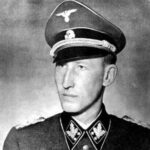 Anytime a government is going to pull off a big change, there must be meetings…planning meetings, if you will. The Third Reich, under Adolf Hitler had long wanted to literally remove the Jewish people from the face of the earth. They began making plans for what they called “The Final Solution to the Jewish Question” and later called the Wannsee Conference to ensure the co-operation of administrative leaders of various government departments in its implementation.
Anytime a government is going to pull off a big change, there must be meetings…planning meetings, if you will. The Third Reich, under Adolf Hitler had long wanted to literally remove the Jewish people from the face of the earth. They began making plans for what they called “The Final Solution to the Jewish Question” and later called the Wannsee Conference to ensure the co-operation of administrative leaders of various government departments in its implementation.
The Wannsee Conference was called by the director of the Reich Security Main Office SS-Obergruppenführer Reinhard Heydrich and included senior government officials of Nazi Germany and Schutzstaffel (SS) leaders. The conference was held in the Berlin suburb of Wannsee on January 20, 1942. The plan of the “Final Solution” was to deport most of the Jews of German-occupied Europe to occupied Poland, where they would be murdered. Hitler was obsessed with what he considered purifying the world. He wanted to build an Aryan race, which is “white non-Jewish people, especially those of northern European origin or descent typically having blond hair and blue eyes and regarded as a supposedly superior racial group.”
In the course of the meeting, Heydrich outlined how European Jews would be rounded up and sent to extermination camps in the General Government (the occupied part of Poland), where they would be killed. Of course, the meetings were merely a formality. The decisions had been made and they were not asking for the support of the attendees, but rather they were simply telling them what they would be doing…if they wanted to live, that is.
Hitler began his discrimination against Jews began immediately after the Nazi seizure of power on January 30, 1933. At first, he employed violence and economic pressure to encourage Jews to voluntarily leave the country. Sadly, the Jews thought that with compliance, they would be ok, but Hitler was determined to remove them from Germany…one way or the other. Then, after the invasion of Poland in September 1939, Hitler stepped up his plan for the extermination of European Jewry and began the killings.
The killings continued and accelerated after the invasion of the Soviet Union in June 1941. On July 31, 1941, Hermann Göring gave written authorization to Heydrich to “prepare and submit a plan for a ‘total solution of the Jewish question’ in territories under German control and to coordinate the participation of all involved government organizations.” At the Wannsee Conference, Heydrich emphasized that “once the deportation  process was complete, the fate of the deportees would become an internal matter under the purview of the SS. A secondary goal was to arrive at a definition of who was Jewish.” Basically, this meant that the Jewish deportees would simply “disappear” into thin air and never be heard from again. Just one copy of the “Protocol” with circulated minutes of the meeting survived the war. It was found by Robert Kempner in March 1947 among files that had been seized from the German Foreign Office. That copy was used as evidence in the subsequent Nuremberg trials. Like many other Holocaust sites, The Wannsee House is now a Holocaust memorial.
process was complete, the fate of the deportees would become an internal matter under the purview of the SS. A secondary goal was to arrive at a definition of who was Jewish.” Basically, this meant that the Jewish deportees would simply “disappear” into thin air and never be heard from again. Just one copy of the “Protocol” with circulated minutes of the meeting survived the war. It was found by Robert Kempner in March 1947 among files that had been seized from the German Foreign Office. That copy was used as evidence in the subsequent Nuremberg trials. Like many other Holocaust sites, The Wannsee House is now a Holocaust memorial.
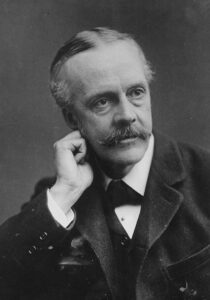 For a number of years Israel had no place to call home. That sounds like a strange thing, but for the nation of Israel, it was not a new thing. Biblical history tells us of a number of times that Israel’s God-given land was taken from them for a time, and they were taken into captivity. Even after the captivity the Jewish people were displaced from their promised land. They were also persecuted and subject to racial discrimination.
For a number of years Israel had no place to call home. That sounds like a strange thing, but for the nation of Israel, it was not a new thing. Biblical history tells us of a number of times that Israel’s God-given land was taken from them for a time, and they were taken into captivity. Even after the captivity the Jewish people were displaced from their promised land. They were also persecuted and subject to racial discrimination.
That began to change when on November 2, 1917, Foreign Secretary Arthur James Balfour wrote an important letter to Britain’s most illustrious Jewish citizen, Baron Lionel Walter Rothschild, expressing the British government’s support for a Jewish homeland in Palestine. I can only imagine how the Baron felt. This was like having someone offer you the moon. It was something the Jew never thought they would see again. Many didn’t think they would live long enough to see it. The letter would eventually become known as the Balfour Declaration, and it was the start of something good.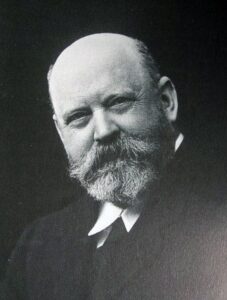
Because of concerns over the direction World War I was going, the British were very supportive of the Zionist movement. Lloyd George among others, held a genuine belief in the righteousness of Zionism, but Britain’s leaders also hoped that a statement supporting Zionism would help gain Jewish support for the Allies. On November 2, Balfour sent his letter to Baron Rothschild, who was a prominent Zionist and a friend of Chaim Weizmann, stating that: “His Majesty’s Government view with favor the establishment in Palestine of a national home for the Jewish people.”
The influence of the Balfour Declaration on the course of post-war events was immediate: According to the “mandate” system created by the Versailles Treaty of 1919, Britain was entrusted with the administration of Palestine, with the understanding that it would work on behalf of both its Jewish and Arab inhabitants. In 1948, the Balfour Declaration was scheduled to expire and Great Britain would no longer rule Palestine. The future of the Jewish people was at stake. The question over what to do with the 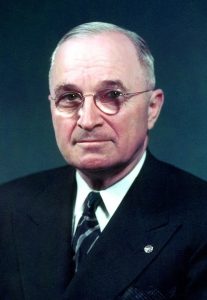 turbulent country was turned over to the United Nations. They, at the insistence of President Harry Truman, eventually decided to create the new country of Israel, specifically as a promised homeland for Jewish people. The new country was to be located across the various holy locations in which many events of the Old Testament occurred. The Jewish people were back in the promised land.
turbulent country was turned over to the United Nations. They, at the insistence of President Harry Truman, eventually decided to create the new country of Israel, specifically as a promised homeland for Jewish people. The new country was to be located across the various holy locations in which many events of the Old Testament occurred. The Jewish people were back in the promised land.
That was when United States President Harry Truman became the first world leader to officially recognize Israel as a legitimate Jewish state. On May 14, 1948, only eleven minutes after its creation the decree was delivered. His decision came after much discussion and advice from the White House staff, all of whom had differing viewpoints. Some advisors felt that creating a Jewish state was the only proper response to the Holocaust and would benefit American interests. Others took the opposite view, concerned about that the creation of a Jewish state would create more conflict in an already tumultuous region. No matter what happens, it was the right thing to do.
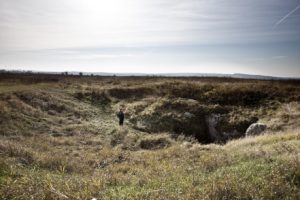 During World War II, and Jews who didn’t want to entrust their survival to the Nazis, had to make a way of escape or find a place to hide. For those who hoped against hope that the Nazis didn’t really hate them, or that the war would end very soon, the chance to escape came and went before they had really given the situation much thought. This was especially true for the Jewish people who had been born in the countries they now found themselves outcasts of.
During World War II, and Jews who didn’t want to entrust their survival to the Nazis, had to make a way of escape or find a place to hide. For those who hoped against hope that the Nazis didn’t really hate them, or that the war would end very soon, the chance to escape came and went before they had really given the situation much thought. This was especially true for the Jewish people who had been born in the countries they now found themselves outcasts of.
Zaida Stermer, his wife Esther, and their six children, of Korolowka, Ukraine, dug up the last of their possessions from behind their house, loaded their wagons with food and fuel, and drove away into the darkness. It was October 12, 1942. The Stermers weren’t alone. Traveling with them were about two dozen friends and family members, all Jews…and all in a lot of trouble. They had almost waited too long, and now the Nazis were out to kill all the Jews in the village. Ukraine had been under German occupation for about a year by then, and they had hoped that the war would end, and they could get back to their lives, but instead, the situation was exploding, and they had to get out while they still could.
The group made their way quietly about 5 miles to the north of town. With the Nazi “roundups and mass executions” of Ukrainian Jews in full swing, they were headed to a dirt road that ended at a sinkhole. There they made their way into a summertime tourist attraction known as the Verteba cave. They knew this was only 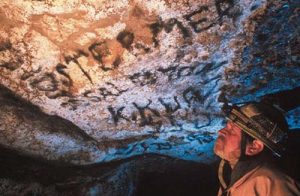 going to be a temporary solution, because in the summer, the tourists would be back, and they would be discovered. They hoped they had until summer.
going to be a temporary solution, because in the summer, the tourists would be back, and they would be discovered. They hoped they had until summer.
Modern cave explorers would not consider going underground without reliable light sources, technical and safety gear, navigation experience, clothing to stave off hypothermia, and of course an adequate supply of food and fresh water. The Stermers and their little band of survivors had none of these things. They went in in the dark, and had no light in the morning either. They fumbled their way further and further into the cave, hoping they could find there way back out. The cave had little ventilation and no real water supply, except what seeped through the rocks. Cooking was dangerous, and they almost lost a child to smoke inhalation. They moved the cooking further into the cave where they found better ventilation. Then came the worst night of all…
They had been in Verteba about four weeks, and thinking they might make it when their optimism was shattered. Suddenly in the dark they heard the sound of boots, and the rattling of guns. Someone yelled in Yiddish, “The Germans are here!! They’ve discovered us!!” Just as suddenly, and before anyone could think twice, Ester spoke up, “Very well, so you have found us. What do you think? Do you think that unless you kill us the Fuhrer will lose the war? Look at how we live her, like rats. All we want is to live, to survive the war years. Leave us here.” She was stalling!! She was allowing the others time to escape. As the stunned Germans listened to this little lady, the others hurried to the escape route they had found earlier. In the end, the  Germans only got eight of the cave dwelling Jews. Miraculously, Esther escaped. They hid out with friends throughout April 1943, but things were heating up again, and Esther told her family, “We are not going to the slaughterhouse.” She said to her son, Nissel, “Go to the forest, find a hole, anything.” It was thanks to Nissel that the family survived. Nissel located the cave known as the Priest’s Grotto. It was thought that the world record for living underground was 205 days, but the true record was set by the women and children who survived the Priest’s Grotto, by living completely underground for 344 days without seeing the outside world. It was a tough way to live, but they did survive, and that is a miracle.
Germans only got eight of the cave dwelling Jews. Miraculously, Esther escaped. They hid out with friends throughout April 1943, but things were heating up again, and Esther told her family, “We are not going to the slaughterhouse.” She said to her son, Nissel, “Go to the forest, find a hole, anything.” It was thanks to Nissel that the family survived. Nissel located the cave known as the Priest’s Grotto. It was thought that the world record for living underground was 205 days, but the true record was set by the women and children who survived the Priest’s Grotto, by living completely underground for 344 days without seeing the outside world. It was a tough way to live, but they did survive, and that is a miracle.
 When Hitler began his “Final Solution,” the Jewish people and several other groups of people had no idea what was coming their way. As people began to disappear and their families began to realize that Hitler was going to kill all of them, they began, in a panic, to try to figure out a way out of the German occupied areas of Europe. By the time people realized that they were in deep trouble, it was often too late, or nearly too late. Walls and fences surrounded them, with armed guards set up at all entrances to keep the people inside their prison walls. There seemed to be no way out.
When Hitler began his “Final Solution,” the Jewish people and several other groups of people had no idea what was coming their way. As people began to disappear and their families began to realize that Hitler was going to kill all of them, they began, in a panic, to try to figure out a way out of the German occupied areas of Europe. By the time people realized that they were in deep trouble, it was often too late, or nearly too late. Walls and fences surrounded them, with armed guards set up at all entrances to keep the people inside their prison walls. There seemed to be no way out.
This was where the resistance really came in. Some of the resistance personnel were Jewish people in the camps or towns, but some were the Christian citizens of the towns. They were not Jewish, and were not in trouble, but the felt a deep love for humanity and a deep sense of wrong and right. They could not stand by and do nothing, while people were killed. They took people into their homes, and built hiding places for them. Extra walls were built into rooms, making them slightly smaller, but providing a tiny space where the Jewish people they were helping could take refuge. It was a huge risk,  because if they were caught helping the Jewish people, they would be killed or sent to the work camps.
because if they were caught helping the Jewish people, they would be killed or sent to the work camps.
The Jewish people who were being hidden no longer had access to ration cards, so they could not buy food. The people who were hiding them had to share their food, meaning their own meager rations had to feed more people that before. Everyone lost weight. Everyone became weaker. People learned to find roots, mushrooms, berries and anything else they could forage in the forests…when they could get to the forest. Everyone was thinner in those days…dangerously thin, especially the Jewish people.
People, like Corrie ten Boom, who helped the Jewish people, gypsies, and Jehovah’s Witnesses, took great risks. Sometimes, they were turned in by their neighbors…for the reward money the Nazis offered. Other people hated the Jewish people as much as Hitler, and they turned them in out of hate. They didn’t care if there 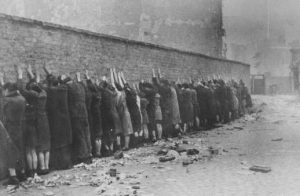 was a reward or not. Some people were as full of hate as the Nazis. Nevertheless, While the Nazis and the Nazi sympathizers were filled with hate, many people of that era were filled with love for their fellowman, and did not see the race, religious, or cultural differences. They just saw people, and knew they could not stand by, witnesses to the slaughter, and do nothing. The integrity of these people makes me wonder why things can’t be that way in our times. The best way bring change in any society is through love for one another…not hate. The people who fought against the Nazis and showed compassion for the Jewish people, gypsies, and Jehovah’s Witnesses, were willing to die to save people…not to destroy them.
was a reward or not. Some people were as full of hate as the Nazis. Nevertheless, While the Nazis and the Nazi sympathizers were filled with hate, many people of that era were filled with love for their fellowman, and did not see the race, religious, or cultural differences. They just saw people, and knew they could not stand by, witnesses to the slaughter, and do nothing. The integrity of these people makes me wonder why things can’t be that way in our times. The best way bring change in any society is through love for one another…not hate. The people who fought against the Nazis and showed compassion for the Jewish people, gypsies, and Jehovah’s Witnesses, were willing to die to save people…not to destroy them.
 One of the most evil dictators of all time was Adolf Hitler. He not only wanted control of the world, but he decide that there were a number of people who had no right to live. To him, only the Aryan, or Master Race was of value. Hitler’s “Master Race” is a concept in Nazi ideology in which “the putative Nordic or Aryan races, predominant among Germans and other northern European peoples, are deemed the highest in racial hierarchy.” Hitler was obsessed with the idea of removing anyone who did not fit into that definition of the Master Race…especially the Jewish people.
One of the most evil dictators of all time was Adolf Hitler. He not only wanted control of the world, but he decide that there were a number of people who had no right to live. To him, only the Aryan, or Master Race was of value. Hitler’s “Master Race” is a concept in Nazi ideology in which “the putative Nordic or Aryan races, predominant among Germans and other northern European peoples, are deemed the highest in racial hierarchy.” Hitler was obsessed with the idea of removing anyone who did not fit into that definition of the Master Race…especially the Jewish people.
Hitler was insane, and in reality, insane is not a strong enough word for it. I don’t think that most of us could conceive of the level of evil that possessed Adolf Hitler. He didn’t care who died to bring about his plan for the world. He expected sacrifice from his people, unquestioned sacrifice. Meanwhile, Hitler himself was always safely hidden away…protected from his enemies…the people who disagreed with his evil cruelty. Hitler had often said that his Third Reich would be a 1,000-year Reich. He was determined to have a legacy that would span the ages. Well, he is remembered I suppose, but with disdain.
I’m sure Hitler had several places that he hid in, but one of them, a refurbished air-raid shelter seemed to be  his bunker of choice. Hitler had gone into his bunker on January 16, after deciding to remain in Berlin for the last great siege of the war. He knew he was losing, but coward that he was, had no intention of being arrested. Fifty-five feet under the chancellery, where as chancellor, he lived, was his shelter. It contained 18 small rooms and was fully self-sufficient, with its own water and electrical supply. During that time, he left only rarely (once to decorate a squadron of Hitler Youth) and spent most of his time micromanaging what was left of German defenses and entertaining such guests as Hermann Goering, Heinrich Himmler, and Joachim von Ribbentrop. At his side were Eva Braun and his dog, an Alsatian named Blondi.
his bunker of choice. Hitler had gone into his bunker on January 16, after deciding to remain in Berlin for the last great siege of the war. He knew he was losing, but coward that he was, had no intention of being arrested. Fifty-five feet under the chancellery, where as chancellor, he lived, was his shelter. It contained 18 small rooms and was fully self-sufficient, with its own water and electrical supply. During that time, he left only rarely (once to decorate a squadron of Hitler Youth) and spent most of his time micromanaging what was left of German defenses and entertaining such guests as Hermann Goering, Heinrich Himmler, and Joachim von Ribbentrop. At his side were Eva Braun and his dog, an Alsatian named Blondi.
Hitler was a coward, who put his men out on the front lines to do his evil bidding, while he hid behind the scenes, so that the opposing armies couldn’t get to him. He thought he had it all planned out. but as April 1945 came to a close, his “1,000 year Reich” was collapsing and enemy soldiers were closing in to shut him down. So, he married his long-time girlfriend, Eva Braun on April 28, 1945, and two days later they committed suicide together. He was warned by officers that the Russians were only a day or so from overtaking the chancellery.  They urged him to escape to Berchtesgarden, a small town in the Bavarian Alps where Hitler owned a home, but he instead chose suicide. It is believed that both he and his wife swallowed cyanide capsules…which had been tested for their efficacy on his “beloved” dog and her pups. Then, just to be sure, he shot himself with his service pistol. The couple’s bodies were cremated in the chancellery garden by the bunker survivors, as per Hitler’s orders and it was reported later that they were partially recovered by Russian troops. Still, that didn’t prove to many that he was dead. Finally, a German court officially declared Hitler dead in 1956. Finally the world was rid of a despicable piece of garbage.
They urged him to escape to Berchtesgarden, a small town in the Bavarian Alps where Hitler owned a home, but he instead chose suicide. It is believed that both he and his wife swallowed cyanide capsules…which had been tested for their efficacy on his “beloved” dog and her pups. Then, just to be sure, he shot himself with his service pistol. The couple’s bodies were cremated in the chancellery garden by the bunker survivors, as per Hitler’s orders and it was reported later that they were partially recovered by Russian troops. Still, that didn’t prove to many that he was dead. Finally, a German court officially declared Hitler dead in 1956. Finally the world was rid of a despicable piece of garbage.
 Imagine being forced to take action against your own business. Most of us couldn’t even begin to comprehend what could possibly bring about such an event, but it has happened in the past…unbelievably. On April 23, 1938, before the main Holocaust took place, but leading up to it for sure, Austria’s 200,000 Jews were thrown into a state of panic. The Nazi anti-Semitic movement was gaining momentum, the Hitler Youth were becoming more and more emboldened at the urging of their evil leader. Demonstrations were held, in front of the Jewish shops, and more often that not, the Jewish shopkeeper was forced to carry a sign and actually picket their own shops.
Imagine being forced to take action against your own business. Most of us couldn’t even begin to comprehend what could possibly bring about such an event, but it has happened in the past…unbelievably. On April 23, 1938, before the main Holocaust took place, but leading up to it for sure, Austria’s 200,000 Jews were thrown into a state of panic. The Nazi anti-Semitic movement was gaining momentum, the Hitler Youth were becoming more and more emboldened at the urging of their evil leader. Demonstrations were held, in front of the Jewish shops, and more often that not, the Jewish shopkeeper was forced to carry a sign and actually picket their own shops.
The situation was alarming to the Jews, as they recalled that Chancellor Adolf Hitler’s so-called “Easter Peace” was to end on April 24th. Many of the German police had been gone since Friday and all but a few German troops were scheduled to leave soon. That might have seemed like a good thing to most of us, but the Jews knew better. They expected to find the situation in Austria more completely under the control of Austrian anti-Semites who were filled with hate for the Jews. So much had changed since the March 12, 1938, when the Nazis annexed Austria. The Jewish people had been transformed from successful business people and respected citizens, to being considered less than human.
While no mention of the boycott and forced picketing appeared in newspapers, who talked only about the need to infuse a “fresh spirit” into the anti-Jewish drive, the audacity of what took place was something far more sinister than the innocent sounding call to action. This could have easily been the beginning of the horrific event known to most of us as The Holocaust. Hitler encouraged the Nazis saying, “With the Easter peace over, Jewish agitators must look forward to meeting in person that typically German personage who dons evening dress when the time comes to wield the axe.” I did not know this, but German executioners wore evening dress for beheadings…like it was a big celebration.
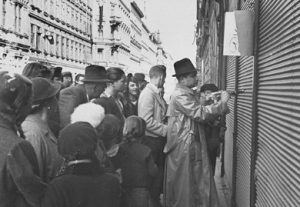
Any Jewish business was a target…not just in Austria and Germany, but Hitler’s poisonous rhetoric spilled over to other countries as well. Even countries who didn’t really hate the Jewish people turned against the Jewish people…mostly because they were afraid of the consequences they could face by being empathetic with the Jewish people. The humiliation poured out on the Jewish people from all directions was appalling, and criminal. And the idea of forcing them to picket in front of their own business…against their own business, is despicable. The audacity of such an act is only topped by the further cruel acts that were carried out on these same people.
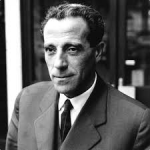
 As Hitler’s vicious plan to wipe out the Jewish people started to come together, many Jewish people found their lives ripped away from them, and then, found themselves in the ghettos…if they were lucky, or the “work” camps…if they weren’t. Eventually the plan was to move all the Jews to the camps, or to transport them into the woods and shoot them. Once people were moved into the camp, there was pretty much one way out of there…death. The people dreamed of escaping the camps, but it was futile…until April 10, 1944.
As Hitler’s vicious plan to wipe out the Jewish people started to come together, many Jewish people found their lives ripped away from them, and then, found themselves in the ghettos…if they were lucky, or the “work” camps…if they weren’t. Eventually the plan was to move all the Jews to the camps, or to transport them into the woods and shoot them. Once people were moved into the camp, there was pretty much one way out of there…death. The people dreamed of escaping the camps, but it was futile…until April 10, 1944.
Rudolf Vrba and Alfred Wetzler came from the same hometown of Trnava in Slovakia. Being from the same town, they knew they could trust each other. The two men were determined to escape from Auschwitz so they could somehow let the rest of the world know what was going on there. Every day, they probed Auschwitz for weaknesses. While they searched, they were formulating escape plans. Day after day they rejected plans that they knew would only get them killed, and spoil their chances of completing their mission to save their people. Finally, one day, Fred Wetzler approached Rudi Vrba with a plan that seemed plausible. For the first time, they felt like they had a chance to succeed.
Fred told Rudolf about a pile of wooden planks stacked outside the camp perimeter waiting to be used for construction of a new facility. Fred said he knew of four prisoners planning to hide in a cavity in the middle of the wood pile. The plan was to wait for the SS guards to conclude a mandatory three-day search, and then make their escape and head south toward Slovakia. It was risky, but a few days later the plan went off without a hitch…at least the escape did. The initial strategy planned by the four prisoners, of hiding in the wood planks had worked, and they got away, but a few days later the four prisoners were caught in the village south of the camp. Rudi and Fred were worried that the four prisoners would reveal the method of their escape to the SS, but to their credit, they kept silent.
The secret of the cavity in the stack of planks stayed a secret, and a couple of weeks later, Fred and Rudi decided to attempt the same escape plan themselves. Their escape was far more successful than the escape of the first four prisoners. Once they were out of Auschwitz, Fred and Rudi had roughly 80 miles of Nazi occupied Poland ahead of them before the reached Slovakia. Their journey wasn’t a straightforward trip. They got lost and wandered around a village called Bielsko. It took them all night to find their way out and then in broad daylight, they had no choice to ask for help. They knocked on the door of a house and a woman, knowing that they were on the run, let them in and fed them. Then later that night, she gave them money, and told them how to escape through the mountains.
Of course, their journey was not without it troubles. At one point, they crossed paths with a German patrol. A gun shot sent them scrambling for cover. They heard dogs howling, and as they were running they came upon a stream. It would save them in the end. The water hid their scent, and while the water was freezing, they crossed the stream, and escaped. More strangers helped them along their journey, and against all odds, the two men made it to the Polish-Slovak borer.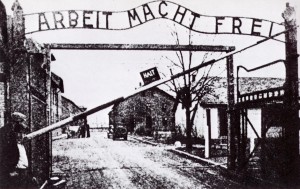
On April 21st, 1944, fourteen days after they emerged from the stack of planks, Rudi Vrba and Fred Wetzler reached Slovak soil. Once inside Slovakia, they met yet another sympathetic peasant who brought them to a prominent doctor in the town of Cadca. The doctor listened to their story and said, “Tomorrow I’ll take you to the leaders of the Jewish community in Zilina. They’ll know what’s best to do.” For the rest of his life, Rudolf Vrba, who had escaped from Auschwitz determined to warn the world about the death factory before another train load of Jews could be shipped there, wished the doctor had been right.
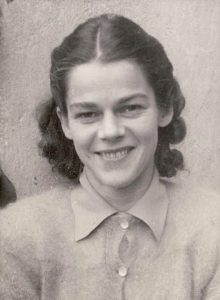 Milly Elise “Lise” Borsum was a Norwegian resistance member during World War II. Born on September 18, 1908 in Kristiania, she was the daughter of pianist and composer Eyvind Alnaes and his wife Emilie Thorne. She was married to physician Ragnar Borsum from 1930 to 1949, and was mother of actress Bente Borsum.
Milly Elise “Lise” Borsum was a Norwegian resistance member during World War II. Born on September 18, 1908 in Kristiania, she was the daughter of pianist and composer Eyvind Alnaes and his wife Emilie Thorne. She was married to physician Ragnar Borsum from 1930 to 1949, and was mother of actress Bente Borsum.
During the Holocaust, Lise and her husband had compassion on the Jewish people, making the fateful decision to harbor them from the Nazis. In April of 1943, Lise and her husband were arrested and incarcerated at the Grini concentration camp for two months. They had been members of a network which helped Jewish people escape to Sweden. On June 28, 1943, she was sent to Germany, with MS Monte Rosa from Oslo  to Arhus, and further with railway transport to Hamburg. She spent a short time at the Hütten Gefängnis in Hamburg before ending up as a Nacht und Nebel prisoner at the Ravensbrück concentration camp, which was a camp specifically for women. Nacht und Nebel was a directive issued by Adolf Hitler on December 7, 1941 targeting political activists and resistance “helpers” in World War II to be imprisoned or killed. Their families and the population usually knew nothing of their fate or whereabouts They were the Nazi state’s alleged offenders, often without trial or conviction or even charges. Victims who disappeared in these Night and Fog actions were often never heard from again. The prisoners usually had their heads shaved and their dignity removed in any horrific way
to Arhus, and further with railway transport to Hamburg. She spent a short time at the Hütten Gefängnis in Hamburg before ending up as a Nacht und Nebel prisoner at the Ravensbrück concentration camp, which was a camp specifically for women. Nacht und Nebel was a directive issued by Adolf Hitler on December 7, 1941 targeting political activists and resistance “helpers” in World War II to be imprisoned or killed. Their families and the population usually knew nothing of their fate or whereabouts They were the Nazi state’s alleged offenders, often without trial or conviction or even charges. Victims who disappeared in these Night and Fog actions were often never heard from again. The prisoners usually had their heads shaved and their dignity removed in any horrific way 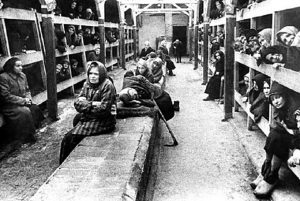 imaginable to bring them into submission.
imaginable to bring them into submission.
She was held at Ravensbrück until April 8, 1945, when the surviving Scandinavian prisoners were transported home with the White Buses organized by the Swedish Red Cross. She was one of the blessed few who walked away alive from the concentration camps. Many prisoners, political or otherwise were killed, starved, beaten, or worked to death. Lise Borsum managed to live through it. Later in life, she was known for her writings and for organizing work after the war. She went on to live a long life, dying on August 29, 1985 at the age of 76. She had done her part to help the Jewish people during the Holocaust, and she was not sorry.
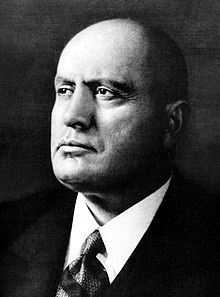 Every United States Presidential election brings heated debates, and many arguments from both sides of the aisle. I’m sure it is the same in most other nations, who have the opportunity to vote too. Being an unapologetic Conservative, it is my belief that the less the government controls the citizens the better. Socialism and Fascism are both forms of government control, and while some people think these are great, they ultimately find out that what the government gives, the government can also take away. This was what we saw with Adolf Hitler. He came into office as an elected official, and before long, he changed everything for the German people, and in many ways the world, especially the Jewish people, Gypsies, and any other groups he disagreed with. The people were fooled into thinking he was a great man, until it was too late.
Every United States Presidential election brings heated debates, and many arguments from both sides of the aisle. I’m sure it is the same in most other nations, who have the opportunity to vote too. Being an unapologetic Conservative, it is my belief that the less the government controls the citizens the better. Socialism and Fascism are both forms of government control, and while some people think these are great, they ultimately find out that what the government gives, the government can also take away. This was what we saw with Adolf Hitler. He came into office as an elected official, and before long, he changed everything for the German people, and in many ways the world, especially the Jewish people, Gypsies, and any other groups he disagreed with. The people were fooled into thinking he was a great man, until it was too late.
Similar to Adolf Hitler, Italian Fascist leader Benito Mussolini did not become the dictator of a totalitarian regime overnight. Mussolini started out as a schoolteacher and an avowed socialist. After World War I he became a leader of the nascent Fascist movement. Like much of Europe, Italy was in the middle of great social turmoil following World War I. During the turmoil, paramilitary groups and street gangs frequently clashed over their competing ideas for the new political order. A close confidant of Mussolini formed a Fascist paramilitary group, known as the Blackshirts or Squadristi, and because Mussolini was their leader, the gangs found that government fears of a communist revolution allowed them to operate without state intervention. Apparently, the people thought Socialism and Fascism were better than Communism. By 1921, Mussolini had been elected to parliament as the leader of the growing National Fascist Party.
Soon after Mussolini’s election…the party’s Chosen One…armed Blackshirts marched on Rome, demanding that the king install Mussolini as Prime Minister. Why the king allowed this to happen, is beyond me, but in a decision that utterly changed the course of Italian and European history, King Victor Emmanuel III ignored Prime Minister Luigi Facta’s pleas that he declare martial law, leading to Facta’s resignation and Emmanuel’s invitation to Mussolini to form a new government. It was a move that was completely insane. The Fascists and their moderate allies began dismantling Italy’s democratic institutions. Mussolini was proclaimed dictator for a year, like that was going to be all it was, and increasingly merged his party and its paramilitary wing with the state and the official military. He also undertook a program of privatizations and anti-union legislation in order to assure industrialists and aristocrats that fascism would protect them from socialism. Before long, the Italian government didn’t even resemble its former self.
Still, many Fascists felt Mussolini was moving too slowly, so they took matters into their own hands. In 1924, assassins with ties to Mussolini killed socialist leader Giacomo Matteotti, leading most of the parliamentary opposition to boycott Mussolini’s legislature. The Fascists felt that their moment had come. On December 31,  they issued an ultimatum to Mussolini. Three days later on January 3rd, he addressed the remainder of parliament, declaring “I, and I alone, assume the political, moral, and historical responsibility for all that has happened,” obliquely referring to the assassination of Matteotti. In doing this, Mussolini dared prosecutors and the rest of Italy’s democratic institutions, as well as the king, to challenge his authority. It was their last chance, but no one opposed him. Thus, from 1925 onward, Mussolini was able to operate openly as a dictator, styling himself Il Duce (meaning The Leader) and fusing the state and the Fascist Party. For the next two decades, suppression and brutality became the norm, culminating in Mussolini’s alliance with Nazi Germany and World War II. I heard it said that, “You can vote yourself into Socialism, but you will have to shoot your way out of it.” It is a good warning for all of us as we approach the next Presidential election. We have a number of candidates who want Socialism, and it would be a dire mistake to allow that to happen to our free, Capitalist nation. People don’t always understand how important our elections are.
they issued an ultimatum to Mussolini. Three days later on January 3rd, he addressed the remainder of parliament, declaring “I, and I alone, assume the political, moral, and historical responsibility for all that has happened,” obliquely referring to the assassination of Matteotti. In doing this, Mussolini dared prosecutors and the rest of Italy’s democratic institutions, as well as the king, to challenge his authority. It was their last chance, but no one opposed him. Thus, from 1925 onward, Mussolini was able to operate openly as a dictator, styling himself Il Duce (meaning The Leader) and fusing the state and the Fascist Party. For the next two decades, suppression and brutality became the norm, culminating in Mussolini’s alliance with Nazi Germany and World War II. I heard it said that, “You can vote yourself into Socialism, but you will have to shoot your way out of it.” It is a good warning for all of us as we approach the next Presidential election. We have a number of candidates who want Socialism, and it would be a dire mistake to allow that to happen to our free, Capitalist nation. People don’t always understand how important our elections are.
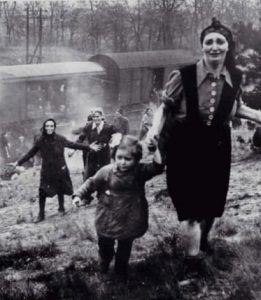 Friday, the 13th is not considered to be a lucky day…if you happen to be superstitious, but for almost 2500 Jewish people, as well as for Major Clarence L. Benjamin, Friday the 13th of April, 1945 would prove that Friday the 13th could be a very blessed day. While on a routine patrol a few miles northwest of Magdeburg, Benjamin and his unit came upon a railroad siding in a wooded ravine not far from the Elbe River. There, about 200 shabby looking civilians were sitting by the side of the road. Even in their shabby state, there was something immediately apparent about each one of these people, men and women, which drew immediate attention. These people were skeleton thin with starvation Their faces showed a sickness, and the way in which they stood…was like they were beaten and dejected, but there was something else. When they saw the Americans they began laughing in joy…if it could be called laughing. It was an outpouring of pure, near-hysterical relief. The reason, the unit soon found out was the railroad siding.
Friday, the 13th is not considered to be a lucky day…if you happen to be superstitious, but for almost 2500 Jewish people, as well as for Major Clarence L. Benjamin, Friday the 13th of April, 1945 would prove that Friday the 13th could be a very blessed day. While on a routine patrol a few miles northwest of Magdeburg, Benjamin and his unit came upon a railroad siding in a wooded ravine not far from the Elbe River. There, about 200 shabby looking civilians were sitting by the side of the road. Even in their shabby state, there was something immediately apparent about each one of these people, men and women, which drew immediate attention. These people were skeleton thin with starvation Their faces showed a sickness, and the way in which they stood…was like they were beaten and dejected, but there was something else. When they saw the Americans they began laughing in joy…if it could be called laughing. It was an outpouring of pure, near-hysterical relief. The reason, the unit soon found out was the railroad siding.
Standing silently on the tracks of the siding was a long string of grimy, ancient boxcars. On the banks by the tracks, trying to get some pitiful comfort from the thin April sun, sat a multitude of people of varying stages of misery. They sat motionless in despair. When they group sighted the Americans, a great stir went through this strange camp. Those who were able rushed toward the Major’s jeep and the two light tanks. On the hill to the left people were resting…some forever. About sixteen people died of starvation before food could be brought to the train. They simply couldn’t hold out any longer.
As the Major soothed the people, he eventually found some who spoke English, and their story came out. This had been, and still was, a horror train. This train which contained about 2,500 Jews, had a few days previously left the Bergen-Belsen death camp. Men, women and children, were all loaded into a few available railway cars, some passenger and some freight, but mostly the typical antiquated freight cars, called “40 and 8” cars. The term, from World War I, “40 and 8” meant that these cars would accommodate 40 men or 8 horses, but the cars were crammed with about 60 to 70 people, with standing room only for most of them. The cars were hot and it was hard to breathe. In all, the cars held about 2,500 Jews, far more than they should have.
The war was winding down, and the Nazis were trying to evacuate the concentration camps ahead of the Allied troops arrival. On April 10, 1945, three trains were sent from Bergen-Belsen with the purpose to move eastward from the Camp, to the Elbe River. They were told to reverse direction because of the rapidly advancing Russian Army. The train reversed direction and headed to Farsleben. There, they were then told that 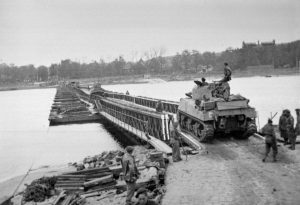 they were heading into the advancing American Army. The train halted at Farsleben…awaiting further orders. The engineers received their orders…drive the train to, and onto the bridge over the Elbe River, and either blow it up, or just drive it off the end of the damaged bridge, with all of the cars of the train crashing into the river, and killing or drowning all of the occupants. While the engineers thought about this action, knowing that they too would be hurtling themselves to death, the Americans caught up to them. The arrival of the 743rd Tank Battalion was the only reason anyone came out of the trains alive. It was Friday the 13th…a very blessed day for these Jews. Not an ounce of bad luck there.
they were heading into the advancing American Army. The train halted at Farsleben…awaiting further orders. The engineers received their orders…drive the train to, and onto the bridge over the Elbe River, and either blow it up, or just drive it off the end of the damaged bridge, with all of the cars of the train crashing into the river, and killing or drowning all of the occupants. While the engineers thought about this action, knowing that they too would be hurtling themselves to death, the Americans caught up to them. The arrival of the 743rd Tank Battalion was the only reason anyone came out of the trains alive. It was Friday the 13th…a very blessed day for these Jews. Not an ounce of bad luck there.

